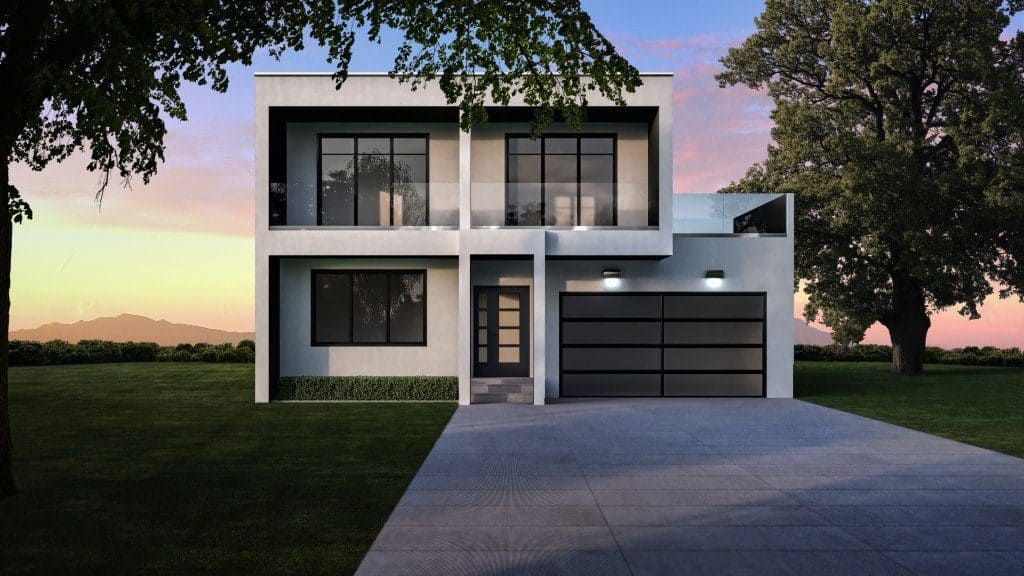
S2A Modular in Southern California is building a factory to manufacture modular net-zero-energy private homes, condominiums, apartment complexes, and commercial buildings. In an interview with Renewable Energy Magazine, co-founder and CEO Brian Kudzas says, “Right now there’s a need in the construction industry to be able to move faster than the traditional model does. In the traditional model, you stop at night, stop at the weekend, stop when it’s raining — it’s just start-stop, start-stop.
“In the modular industry, you’ve got first shift, second shift, third shift. It really doesn’t stop. Because of that, speed is so important. If you take a 2000 square foot home, on average, and build it traditionally, it takes you about a year to get that thing from start to finish. In the modular, you can do that within about three months, total. It’s about a week in the factory — that’s about 90 percent of the home — and then it gets transported. It only takes a day or two to actually set and then you’ve got the final 10 percent of the building materials to actually finish the home off, so we tell clients about a three month time frame.”
Speed is important for a number of reasons, not the least of which is economics. If you are having a house built, payments on your construction loan begin when the first dollars are lent to the builder and go up each time the bank disperses another dollop of dollars. In the end, the homeowner can be on the hook for a year’s worth of mortgage payments before even moving in.
The S2A Modular concept has attracted a lot of interest from developers in other countries, like China, Mexico, and Pakistan. “Instead of shipping those orders, we’re looking simply to build a factory in those and oversee them, almost like a franchise concept,” Kudzas says. The first homes will be constructed for customers in Southern California but the company already has an order for 62 homes in Montana.
While the company’s target market is US homes of about 2,000 square feet, the modular concept can be adapted to any size home. Kudzas says there is a lot of interest in what he calls ADU or Accessory Dwelling Units — standalone units of about 600 square feet that provide a place where elderly or special needs members of a family can live independently.
The company says Tesla products — the Tesla Powerwall and Tesla Solar Roof — are integral parts of building homes that are energy self-sufficient. Excess electricity will be exported to the local grid at times, while at other times the home may draw power from the grid. But over the course of a year, each home will create as much energy as it uses. The modular approach allows for a more energy efficient building envelope with superior insulation properties, better windows and doors, and energy efficient appliances. Heat pumps with the highest efficiency available will also be part of the process.
Kudzas says some of the biggest corporations in the world are interested in being part of the process. “It’s Amazon, Google, Tesla, Mitsubishi, LG, it’s a combination. There’s so many people coming at us wanting us to use their products, so we’re investigating everything as the factory gets built as to what eventual suppliers we’re going to be using. Those names I mentioned, most of them are very much in front of us and we’ll probably end up using all of them.”
The best news is that with its modular approach, S2A Modular can provide a superior building for about 20% less money than a traditional structure. Much of those savings come from saving time by building in a factory versus building on site. Time is money and the more quickly the process can be completed, the less it costs. A home that would typically cost $700,000 can be completed by S2A Modular for about $560,000, meaning a lower mortgage payment and lower taxes for the owner.
Building modular means creating a more energy efficient package than is possible by trying to retrofit an existing structure. “It’s difficult for the average consumer to go out and retrofit their homes with special windows and insulation and doors and all the special components because the home was built in the 1950s,” Kudzas says. “Think of a Tesla car and taking that Tesla battery out and putting it into a Ford Fusion. It’s never going to work.”
The heart of the concept is the inclusion of the Tesla Powerwall residential storage battery. “Our concept is that if you’re going to start with the concept of running a home off a Tesla Powerwall battery, you’re going to need to surround that with specialized home components to capture as much energy as possible. So we’re starting with that concept and that’s the game-changer.”
